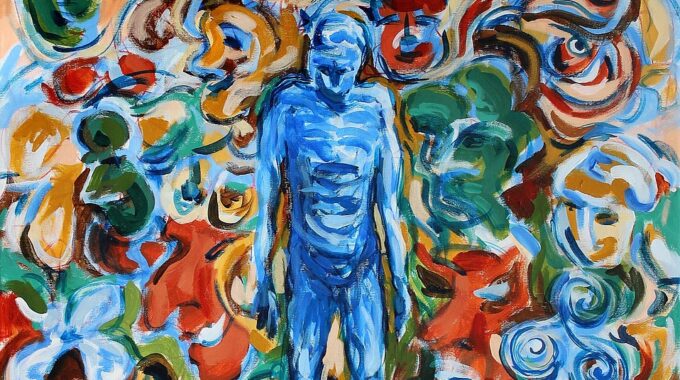For skeptics, the question isn’t “Why should we prioritize DEI?” but rather, “Can we afford not to?” In today’s competitive business landscape, inclusion is no longer optional; it’s essential for success.

Building Empathy: Part One
Empathy for the “out-group”
One only needs to turn on any cable news station, to hear the divisiveness which exists in the U.S. today. Indeed, we are taught by the age of three to like and trust those who are like us (gender, race, religion, other identifiers) and to distrust those who are not like us (the out-group). And yet, in our everyday lives, and certainly within our organizations, we interact every day with those who are in our out-groups.
Inclusion depends upon being able to successfully communicate with those in our out-groups. To do this, we need to build our empathy. Find common ground in uncommon circumstances.
People may confuse empathy with sympathy. They are very different. Empathy is having an affective response to the directly perceived, imagined, or inferred feeling state of another being. Simply put, empathy is being able to put yourself in someone else’s shoes. Sympathy is a feeling of care and concern for someone accompanied by a wish to see them better off or happier.
We have sympathy for flood victims in far off lands and make a donation. We have empathy for our neighbor when a flood hits us both and we pitch in to clean up. The flood victims far away are in our “out-group” whereas our neighbor is in our “in-group.”
The Neuroscience of Empathy
The research into the neuroscience of empathy differentiates three main facets of empathy:
- Mentalizing (cognitive empathy, perspective taking, theory of mind)
- Experience sharing (affective empathy, shared self-other representations, emotional contagion)
- Pro-social concern (emphatic motivation, sympathy, emphatic concern)
The emotional contagion of experience sharing is demonstrated when babies cry after hearing other babies crying. Babies cry in companionship with others, long before they develop a sense of a self, separate from others. fMRI studies show adults exhibit emotional contagion, for example, when viewing images of sad faces.
The majority of social neuroscience studies on empathy use the observation of pain to evoke empathetic responses. This empathy and the brain video shows how we respond to pain in others with a single word identifier. We clearly do not empathize with those in the out-group.
Empathy is shown to exist in all cultures globally with some cultural differences. In the U.S. empathy is exhibited more often among those with a low socioeconomic status. People who have less give more.
How to Increase Empathy
There are several ways to increase empathy. In this article, we address the Awe Experience. In Building Empathy: Part Two we will address other methods.
Research has shown that when “awe” is experienced, people can become more empathetic. For example, awe diminishes a person’s sense of self, shifting their focus away from their own concerns. There are several psychological results of an Awe Experience.
- The most studied psychological effect associated with awe is the “small self”—the feeling of being small relative to one’s surroundings.
- Another result is an increase in humility.
- A third result is cognitive accommodation – when we experience awe, we can change the way we view the world.
- A fourth result of an awe experience is a sense of connection or connectedness – both to other people and to humanity as a whole.
- Positive mood and sense of well-being increases.
- Life satisfaction can increase.
- Materialism can decrease.
- Spirituality may increase in some people.
 Viktor Frankl, a holocaust survivor wrote about his Awe Experience after being liberated from a concentration camp after his wile and family had been killed.
Viktor Frankl, a holocaust survivor wrote about his Awe Experience after being liberated from a concentration camp after his wile and family had been killed.
One day, a few days after the liberation, I walked through the country past flowering meadows, for miles and miles, toward the market town near the camp. Larks rose to the sky and I could hear their joyous song. There was no one to be seen for miles around; there was nothing but the wide earth and sky and the larks’ jubilation and the freedom of space. I stopped, looked around, and up to the sky—and then I went down on my knees. At that moment there was very little I knew of myself or of the world—I had but one sentence in mind—always the same: ‘‘I called to the Lord from my narrow prison and He answered me in the freedom of space.’’
How long I knelt there and repeated this sentence memory can no longer recall. But I know that on that day, in that hour, my new life started. Step for step I progressed, until again I became a human being. ~ Viktor Frankl
 An Awe Experience has two essential central features in common: perceived vastness and a need for accommodation. Vastness can be found in nature, and also in achievements or artistic creations.
An Awe Experience has two essential central features in common: perceived vastness and a need for accommodation. Vastness can be found in nature, and also in achievements or artistic creations.
Example: A study of mindfulness took people into a large city park. Half of the subjects were instructed to face the buildings in the city. The other half was instructed to face the eucalyptus trees. After a period of time, they were to answer some questions. As the paper and pencils were being distributed, the researcher “accidentally” dropped the pencils. Those who looked at the trees, helped to pick the pencils up. The building watchers did nothing.
The Awe Experience described above included perceived vastness (the height and beauty of the trees) and also a need for accommodation. The accommodation of picking up the pencils indicated empathy as the adaptive action.
Building Empathy: Conducting an Awe Walk
The following steps from mindful.org can help you conduct an Awe Walk in your own neighborhood. We begin an awe walk as we do all contemplative exercises, with the breath.
- Take a deep breath in. Count to six as you inhale and six as you exhale. Feel the air move through your nasal passages and hear the sound of your breath. We’ll come back to this breath throughout the walk.
- Feel your feet on the ground and listen to the surrounding sounds. Return to your breath. Count to six while you inhale and six as you exhale.
- Shift your awareness now so that you are open to what is around you, to things that are vast, unexpected, things that surprise, and delight. Take a deep breath in. Count to six as you inhale and six as you exhale.
- Let your attention be open in exploration for what inspires awe. Your attention might appreciate vast spaces, and the sounds and sights within them. You might shift to small patterns, for example of the sorrel on the ground, or the veins on leaves, or a cluster of tiny mushrooms.
- Bring your attention back to the breath. Count to six as you inhale and six as you exhale. Coming out of these experiences of awe, we often feel a sense of wonder. Wonder happens when we are delighted by that which surprises us, and we are moved to find explanations and deep meaning.
Spectra Diversity’s Training and Facilitation kit uses mindfulness, the power of storytelling and other techniques to build empathy among employees and leaders within organizations. For more information or to purchase this training package, please contact info@spectradiversity.com.
Source: mindful, “A Guided Awe Walk Meditation,” Dacher Keltner, April 11, 2017
Source: Greater Good Science Center, “The Science of Awe”, Summer Allen, Ph.D., Sept. 2018
Source: Nature Neuroscience, “The neuroscience of empathy: progress, pitfalls and promise”, Jamil Zaki, Kevin Ochsner, April 15, 2012



